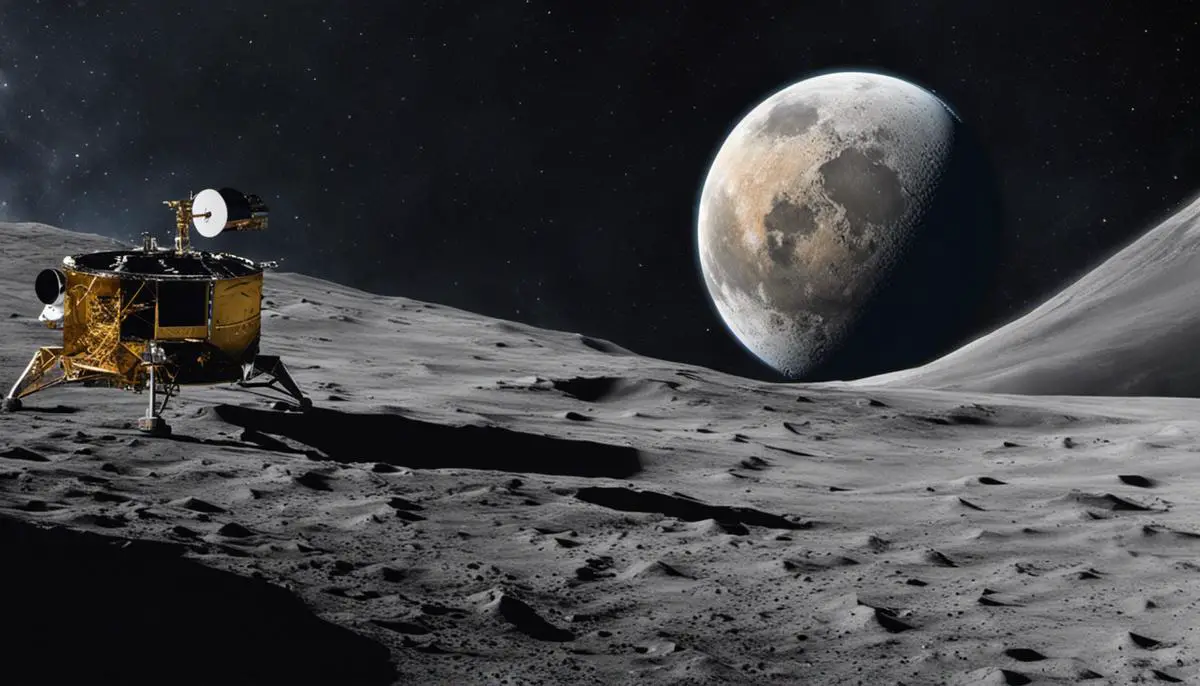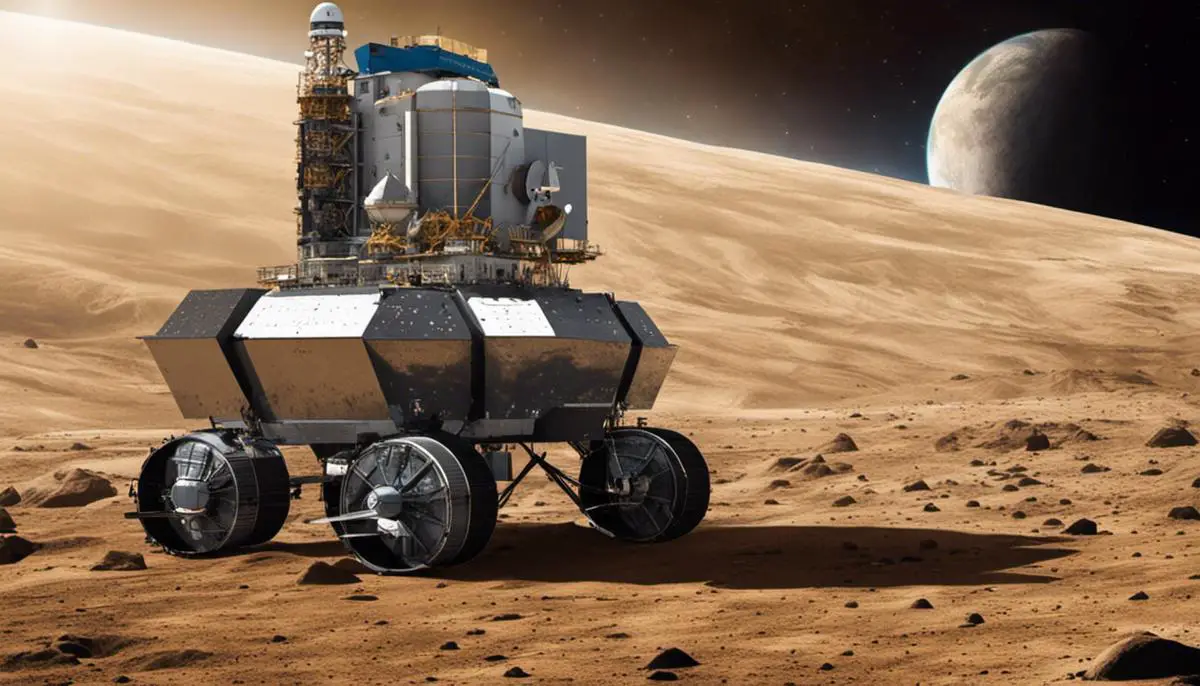India’s odyssey into the cosmos is a fascinating tale of scientific endeavor and nationalist pride. The headliners of this saga are the ambitious Chandrayaan missions, launched by the Indian Space Research Organisation (ISRO), designed to unravel the moon’s veiled mysteries. This paper embarks on an exploratory journey, dissecting the inception, goals, technical aspects, scientific contributions, and the comprehensive impacts of the Chandrayaan missions. It delves into the confluence of factors that inspired the genesis of these missions, scrutinizes the game-changing technologies developed, and underscores the groundbreaking discoveries made along the way.
Contents
Genesis and Objectives of the Chandrayaan Missions
Underpinning Principles and Goals: A Closer Look at India’s Lunar Missions
The world of space exploration continues to be an ever-evolving landscape, teeming with exciting advancements and challenging endeavors. One of the most impressive contributors in this sphere is India, with its ambitious lunar missions, Chandrayaan-1 and Chandrayaan-2. Their groundbreaking work has astounded international circles, stirring the pool of acquired scientific knowledge. This article will delineate the foundational principles and objectives that spearheaded these ambitious projects.
The Indian Space Research Organization (ISRO) propagates its key philosophy: harnessing space technology for national development while pursuing space science research and planetary exploration. This foundation was the stepping stone for India’s engagement with lunar missions, and those principles were mirrored in the two undertaken Chandrayaan expeditions.
The first principle embodied in these missions was the pursuit of scientific knowledge. Crucial questions regarding our moon’s composition, origins, and history were to be answered by these missions. Through an intricate combination of high-resolution remote sensing and in-situ measurements, the missions aimed to gather critical data on the lunar surface, facilitating a comprehensive understanding of the Earth’s lone natural satellite.
Parallel to knowledge acquisition was the principle of innovation. Chandrayaan-1 and Chandrayaan-2 acted as platforms for the development and testing of new technologies. The ISRO designed and crafted state-of-the-art orbiters, landers, and rovers, outfitted with novel scientific instruments. The lunar explorations, thus, assimilated new instrumentation and engineering designs, underscoring India’s bid for innovation in the space arena.
The third principle fosters international collaboration. While the missions were proudly indigenous, they fostered international cooperation on a grand scale. The Chandrayaan-1, for example, carried scientific payloads from various countries. This opened avenues for scientific alliance and information exchange, strengthening global unity in space exploration.
Lastly, the lunar quests aimed to inspire the younger generation. By spreading awareness of India’s prowess in space technologies, the ISRO ignited young minds to the immense possibilities. Creating an environment ripe for the germination of scientific curiosity is indeed a valuable goal of such missions.
The world now waits with baited breath for future missions from India’s ISRO. The foundation laid by Chandrayaan-1 and 2 serves not only as a testament to India’s capabilities but also as a stepping stone towards greater scientific exploration. India’s commitment to knowledge acquisition, innovation, international collaboration, and education remains at the heart of its space ventures, pointing towards a future ripe with new possibilities and discoveries.

Technical Aspects and Innovations of the Chandrayaan Missions
The Chandrayaan missions, setup by India’s space agency, ISRO, serve as case studies of great potential in technical innovation and breakthroughs that have augmented India’s burgeoning space research portfolio. They embody India’s vision of utilizing science as an instrument for establishing a knowledge-driven society and providing solutions to emerging global challenges.
A significant technological innovation brought about by the Chandrayaan missions was the development of the Moon Impact Probe (MIP) equipped on Chandrayaan-1. This $93 million lunar orbiter was intended to identify elements and minerals on the moon’s surface through its unique Hyper Spectral Imager (HySI). The HySI was designed to provide a simultaneous and contiguous sampling of spectral bands for mineralogical mapping, thereby offering a comprehensive view of the lunar surface and enabling scientists to create a high-resolution map of the moon’s surface composition.
Additionally, undertaking the Chandrayaan missions necessitated the development of robust and reliable Deep Space Communication technology. Hence, ISRO set up a cutting-edge Indian Deep Space Network (IDSN) which serves as a crucial link between Earth and Chandrayaan-1’s lunar orbit. The multitasking IDSN, furnished with 32-meter and 18-meter diameter antennas, perform the additional roles of transmitting the navigation commands to the spacecraft and receiving crucial health information.
Chandrayaan-2, the more ambitious sequel to Chandrayaan-1, welcomed the development and launch of a Lunar Lander and Rover, a first for Indian space ventures. It featured an indigenously developed navigation system called GAGAN (GPS Aided GEO Augmented Navigation) used for reducing the error provided by GPS systems. On successfully landing, Chandrayaan-2’s rover, Pragyan, would have explored the lunar surface to study the moon’s water-ice levels and rock formations, essentially probing into lunar geology.
Innovation was also exemplified in the choice of the moon’s southern polar region, an area relatively unexplored by previous lunar missions, which was intended to yield better opportunities for discoveries and observations. Chandrayaan-2’s technically complex mission also intended to use an innovative landing strategy, which, though unsuccessful, reminds us that failures are stepping-stones to success in the pursuit of knowledge.
Thus, the Chandrayaan missions ignited a beacon of advanced space technologies, pushing the boundaries of India’s technical competence. They have propelled India’s space research into unprecedented territories, highlighting its potential and serious intent in space science and exploration. Through these missions, along with their foreseen successors, it’s clear that the Indian space community is keenly stepping into newly-charted territories, bolstering its scientific prowess and reinforcing its commitment to the quest for knowledge. For all their other successes notwithstanding, the mission-proven technologies and strategic breakthroughs of the Chandrayaan missions have indubitably opened the door to promising future endeavors in India’s ambitious cosmic journey.

Scientific Discoveries and Contributions of the Chandrayaan Missions
Building on these foundational elements of the Chandrayaan missions, substantial knowledge has been acquired with regard to lunar research. Examination of the scientific findings and contributions of these missions presents a fascinating tapestry of discovery that continues to enhance our understanding of the moon.
Undoubtedly, one of the paramount achievements of Chandrayaan-1 was the discovery of widespread presence of water (H2O) molecules in the lunar soil, which upended conventional notions of the moon being a completely desiccated body. The Moon Mineralogy Mapper (M3), a NASA instrument aboard the Chandrayaan-1, revealed, with ample clarity, signatures of hydroxyl and water molecules — a resounding confirmation of water-ice presence on the lunar surface, particularly in polar regions. This path-breaking finding has not only enriched the lunar science, but also opened up possibilities of in-situ resource utilization — a concept integral to future interplanetary exploration.
The Chandrayaan-1 mission also brought forth comprehensive and high-resolution chemical and mineralogical mapping of the lunar surface. More than 95% of the moon’s surface was mapped to a high spatial resolution of 80m, accruing an unparalleled database of elements such as Magnesium, Aluminum, Silicon, Calcium, Iron, Titanium, Uranium, and Thorium. This testimony of the lunar surface’s elemental abundance offers prospective pathways for lunar science as well as technologies and resources necessary for long-term human habitation.
Chandrayaan-2, though partial in its operational success, has contributed significantly to lunar research. The orbiter, fully functional in lunar orbit currently, carries eight scientific payloads for mapping lunar surface and studying the moon’s atmosphere. Early results from the IRSO’s CLASS instrument on the orbiter have suggested the presence of Argon-40 in the lunar exosphere, thereby throwing light on the process of seismic activities on the moon.
The pursuit of the lunar South Pole by Chandrayaan-2 is another scientific rationale worthy of appreciation. With indications of larger water-ice presence in permanently shadowed areas, the lunar South Pole, less explored than the North, is seen as a potential hotspot for future human missions. The complex topography and shallow moonquakes detected by Chandrayaan-2 emphasize the scientific interest in the lunar poles.
In essence, the Chandrayaan missions have embroidered significant scientific findings and contributions into the fabric of lunar research. The missions have not only elevated India’s presence in the international space arena, but also fortified the scientific knowledge of the moon, cementing the future foundation of lunar exploration and utilization.

The Impacts and Implications of the Chandrayaan Missions
Having traversed the epitome of space exploration success with Chandrayaan missions, the Indian Space Research Organisation (ISRO) presented significant contributions to the global scientific community and opened numerous channels of exploration in the lunar field. Examining the consequences of both Chandrayaan achievements on India’s space research capabilities and the global perception of India’s dominance in this discipline opens up a vista of understanding.
Riding on the back of the Chandrayaan missions, India’s space research capabilities and infrastructural fortitude catapulted into the global arena with aplomb. Notably, the unprecedented finding of water molecules on the lunar surface during the Chandrayaan-1 mission unveiled a new frontier of lunar exploration, causing ripples of excitement in the global scientific community. This seminal discovery revolutionized understanding of the moon, highlighting the tangible possibility of in-situ resource utilization for interplanetary exploration, which undoubtedly holds the key to future lunar missions and the grand vision of colonization.
With the second moon voyage, Chandrayaan-2, a comprehensive, high-resolution chemical, and mineralogical mapping of the lunar surface was successfully achieved. This provided in-depth understanding of the moon’s domain, particularly the elemental abundance and geological diversity, enriching the global repository of lunar knowledge. Furthermore, the confirmation of Argon-40 in the lunar exosphere, a significant scientific find, keenly underscored the immensity of India’s contribution to lunar research.
The selection of the moon’s south polar region for Chandrayaan-2 also unraveled a host of possibilities, firing the imagination of the global scientific community. The lunar South Pole, indisputably, is a site of exceptional scientific interest, given its apparent propensity for shadowed regions conceivably housing water ice – a resource indispensable for future human missions to the moon and beyond.
In the grand schema of the international space arena, the Chandrayaan missions significantly eked India’s prominence, presenting it as a formidable competitor. The successful deployment of innovations, be it the indigenous Moon Impact Probe (MIP), the Indian Deep Space Network (IDSN), or the envisioned lunar landing strategy, unequivocally signaled India’s technological prowess and ability to make monumental strides in space exploration.
India’s progress in the Chandrayaan missions conveyed a robust message of technical credibility and ambition to the international community, elevating its reputation as a space-faring nation. In essence, these missions not only reinforced India’s commitment to fostering space research, innovation, and global collaboration but also underscored the nation’s scientific potential in contributing to humanity’s understanding of the cosmos.
Looking ahead, the Chandrayaan missions have blazed a clear pathway for future lunar exploration and utilization. The discoveries, technologies deployed, and the ambitious attempt at a South Pole landing have laid a solid foundation for incoming missions, such as the upcoming Chandrayaan-3. The Chandrayaan saga, unequivocally, remains etched as a historic leap in India’s space narrative, catalyzing the galvanization of future space explorations and affirming its caliber on the global space platform.

As we navigate the cosmos through the lens of India’s Chandrayaan missions, the multitude of its influences and implications unravel. Undeniably, these missions have transcended the confines of merely scientific exploration, impinging on national pride and amplifying India’s technological prowess. They have carved a niche for India in the international space exploration landscape, painting it as a formidable contender. At the same time, the missions have also catalyzed a transformative ripple effect within the global scientific community, augmenting our understanding of the moon and expanding the frontier of possibilities for future space exploration.
